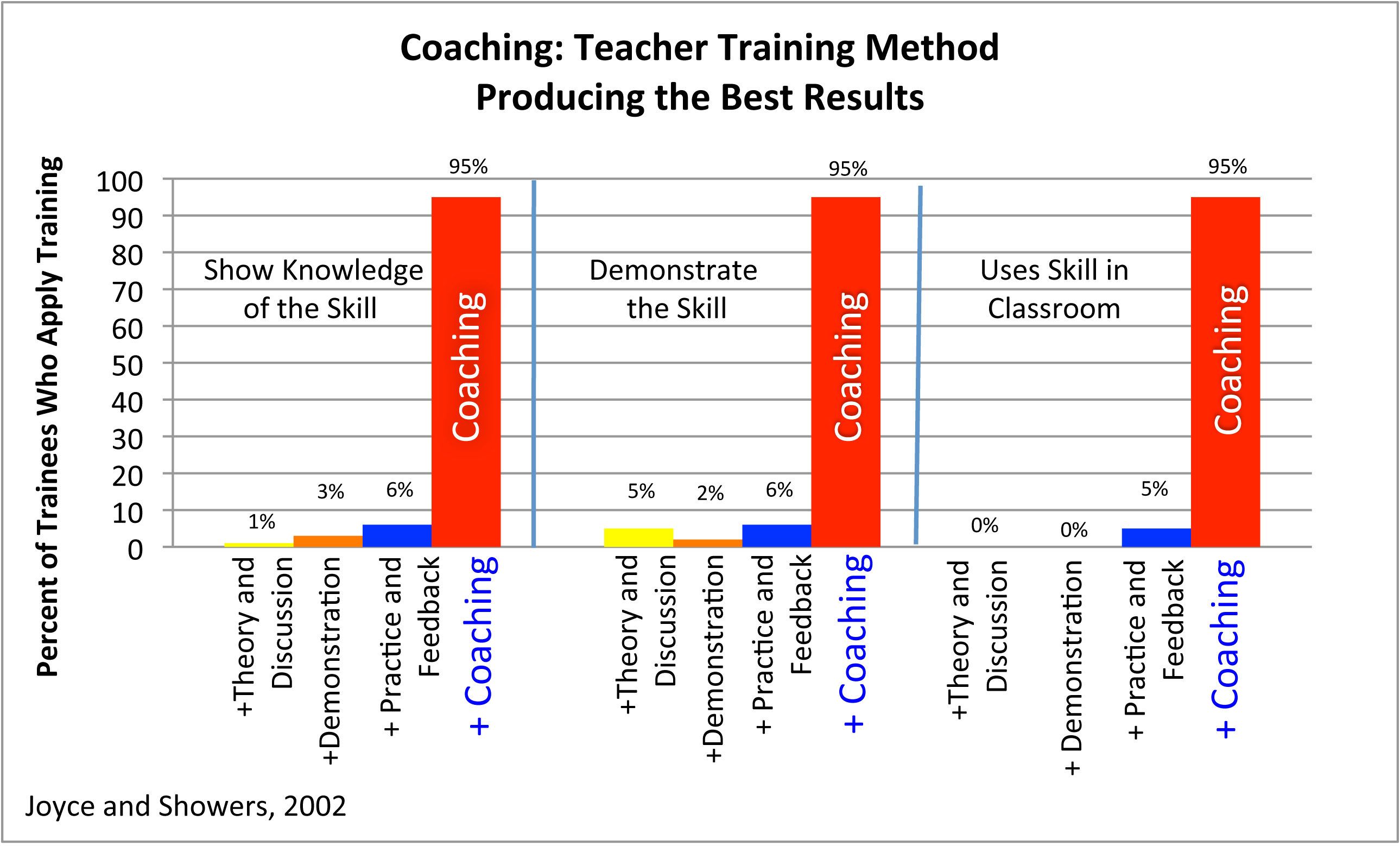What Teacher Training Methods Result in Changes in Classroom Practices?
Why is this question important? This is one of the most fundamental questions that must be answered in order to effectively teach teachers the skills they require to be successful in the classroom. Billions of dollars have been misspent on poorly designed teacher training that does not work.
See further discussion below.

Source(s): Student Achievement Through Staff Development, 2002
Result(s): The most effective training occurred when teachers were exposed to all four of the training methods.
- The traditional lecture method of in-service training did not result in teachers applying newly taught skills in the classroom.
- The introduction of skill demonstrations by the trainer was insufficient in insuring the transfer of the skill from the demonstrator to the staff being trained.
- Only when coaching was added did significant transfer to using skills in the classroom occur.
Implication(s):
- Regardless of what training method is used, participants must have sufficient opportunity to practice skills in real classroom settings.
- If the content of training is new to trainees, training will have to be more extensive than for material that is relatively familiar.
- If the purpose of training is for staff to use the skills on the job, training must be collaborative so that trainer and trainee can solve any problems that arise when putting the training into practice in the classroom.
Author(s): Bruce R. Joyce and Beverly Showers
Publisher(s): Association for Supervision and Curriculum Development (ASCD) Books
Study Description: The book, Student Achievement Through Staff Development, is designed as a guide for developing a system to fundamentally alter how school administrators train school personnel in order to measurably improve student achievement.
The book examines case studies of successful programs, evidence from research, and examples from Joyce and Showers experience.
The book examines the challenging questions:
- How can educators develop the skills to effectively teach students?
- How can educators incorporate how students learn into staff training?
- How can educators adapt teaching strategies to minimize student failure?
Definition(s):
- Transfer: Taking skills from the training setting and using them in the classroom.
- Knowledge: Facts and information presented through discussion, readings, or lectures.
- Demonstration: Modeling a skill for the persons being trained.
- Practice: Using a skill under simulated conditions.
- Coaching: Collaborative work between trainer and trainee to solve problems or answer questions that arise during implementation in the classroom.
Citation: Joyce, B. R., and B. Showers (2002). Student Achievement Through Staff Development, Alexandria, VA: Association for Supervision and Curriculum Development (ASCD) Books.
